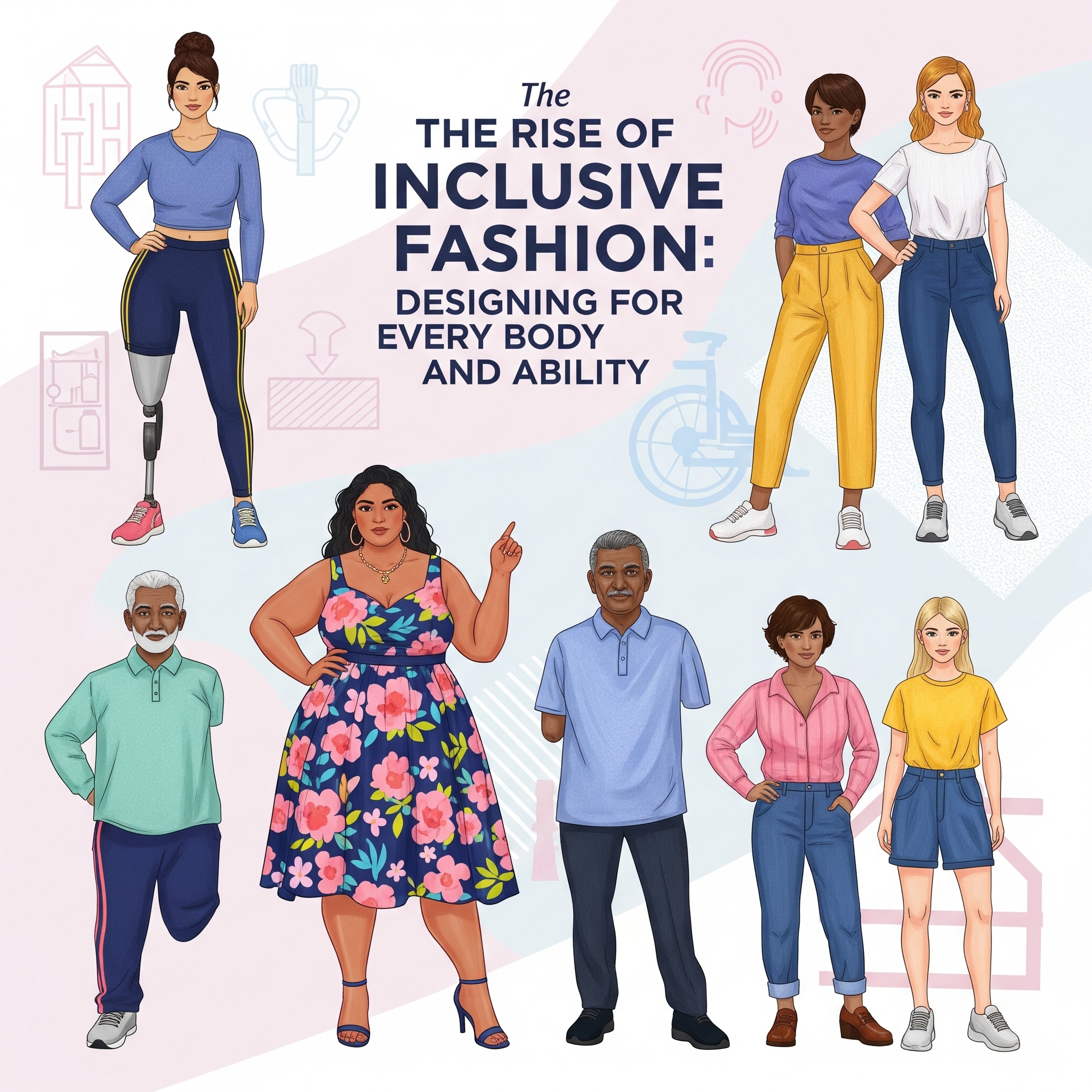Blog
The Rise of Inclusive Fashion: Designing for Every Body and Ability

For too long, the fashion industry has operated within narrow parameters, often catering to a limited range of body types, sizes, and abilities. However, a powerful and necessary shift is underway: the rise of inclusive fashion. This movement advocates for designs, marketing, and accessibility that embrace the full spectrum of human diversity. It’s about recognizing that style is for everyone and that clothing should empower and celebrate all individuals, regardless of their size, shape, physical ability, or identity. This evolution is not just a trend; it’s a fundamental change in perspective that promises a more equitable and representative fashion landscape.
The traditional fashion industry has often perpetuated exclusion through limited sizing. Many brands have historically offered a narrow size range, effectively telling a significant portion of the population that fashion is not for them. This lack of representation can have a detrimental impact on self-esteem and create a sense of marginalization. The inclusive fashion movement challenges this by advocating for extended size ranges, ensuring that clothing is available and stylish for individuals of all shapes and sizes. This includes not only increasing the upper limits of sizing but also considering the nuances of different body proportions to ensure a comfortable and flattering fit.
Beyond size, body shape diversity is another crucial aspect of inclusive fashion. Recognizing that bodies come in a multitude of forms, designers are beginning to move away from standardized silhouettes and create garments that are adaptable and flattering for different body types – whether it’s pear-shaped, apple-shaped, hourglass, or athletic. This involves considering factors like different waist-to-hip ratios, shoulder widths, and bust sizes in the design process.
Adaptive fashion is a rapidly growing area that focuses specifically on the needs of individuals with disabilities. This goes beyond simply making larger sizes and involves designing clothing that is functional, comfortable, and stylish for people with a wide range of physical and cognitive differences. Features of adaptive clothing can include:
- Easy closures: Replacing traditional buttons and zippers with magnetic snaps, Velcro, or easy-to-grasp pull tabs for individuals with limited dexterity.
- Adjustable features: Incorporating adjustable waistbands, inseams, and openings to accommodate different needs and assistive devices.
- Seamless designs: Minimizing pressure points and irritation for individuals with sensory sensitivities or skin conditions.
- Open-back designs: Allowing for easier dressing for those with limited mobility.
- Accommodating prosthetics and medical devices: Designing garments that integrate seamlessly with these aids.
Adaptive fashion is not just about functionality; it’s also about dignity and self-expression. Individuals with disabilities deserve to have access to clothing that makes them feel confident and stylish, just like anyone else. The increasing visibility and innovation in this sector are a testament to the growing recognition of these needs.
Representation in marketing and media is another vital component of inclusive fashion. For too long, advertising campaigns and fashion editorials have predominantly featured a narrow and often unrealistic portrayal of the ideal body. Inclusive fashion advocates for diverse representation, showcasing models of all sizes, shapes, ethnicities, ages, and abilities. Seeing oneself reflected in media imagery can have a profound impact on self-esteem and foster a sense of belonging. Brands that embrace diverse representation send a powerful message that fashion is for everyone.
The rise of influencers and content creators from diverse backgrounds has played a significant role in driving the inclusive fashion movement. These individuals use their platforms to showcase stylish outfits for a wide range of body types and abilities, challenging traditional beauty standards and providing inspiration and resources for their followers. They amplify the voices of marginalized communities and demand greater inclusivity from the industry.
The concept of universal design is also gaining traction in fashion. This approach aims to create products that are usable by as many people as possible, regardless of their abilities or other characteristics. In fashion, this could translate to designing garments with features that benefit a wide range of individuals, such as adjustable closures or comfortable, adaptable fabrics.
While significant progress has been made, there is still work to be done. The journey towards truly inclusive fashion requires a fundamental shift in mindset across the industry – from design and production to marketing and retail. It requires listening to and centering the needs and experiences of diverse communities. It also requires challenging ingrained biases and dismantling systemic barriers.
In conclusion, the rise of inclusive fashion is a transformative movement that recognizes and celebrates the diversity of the human form and experience. By expanding size ranges, embracing body shape diversity, innovating in adaptive design, and promoting diverse representation, the fashion industry is beginning to create a more equitable and empowering landscape for all. Inclusive fashion is not just about making clothes that fit; it’s about creating a world where everyone feels seen, valued, and stylish. It’s about ensuring that fashion truly is for every body and every ability.
